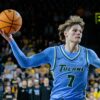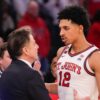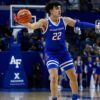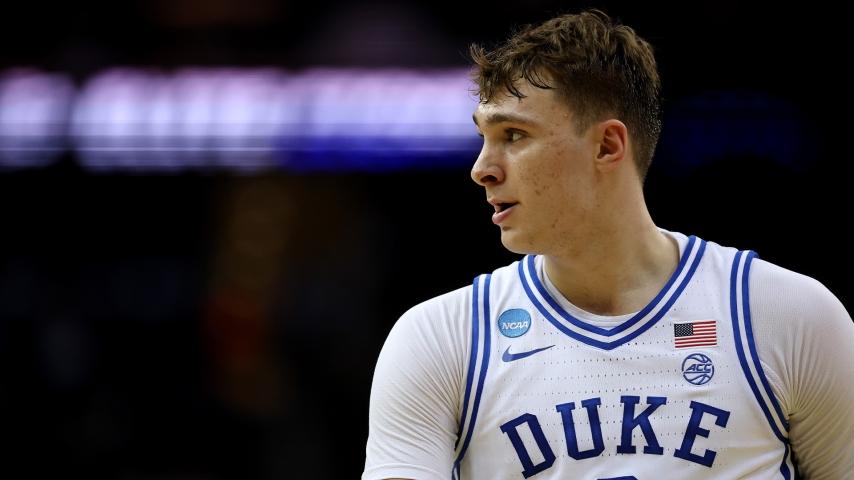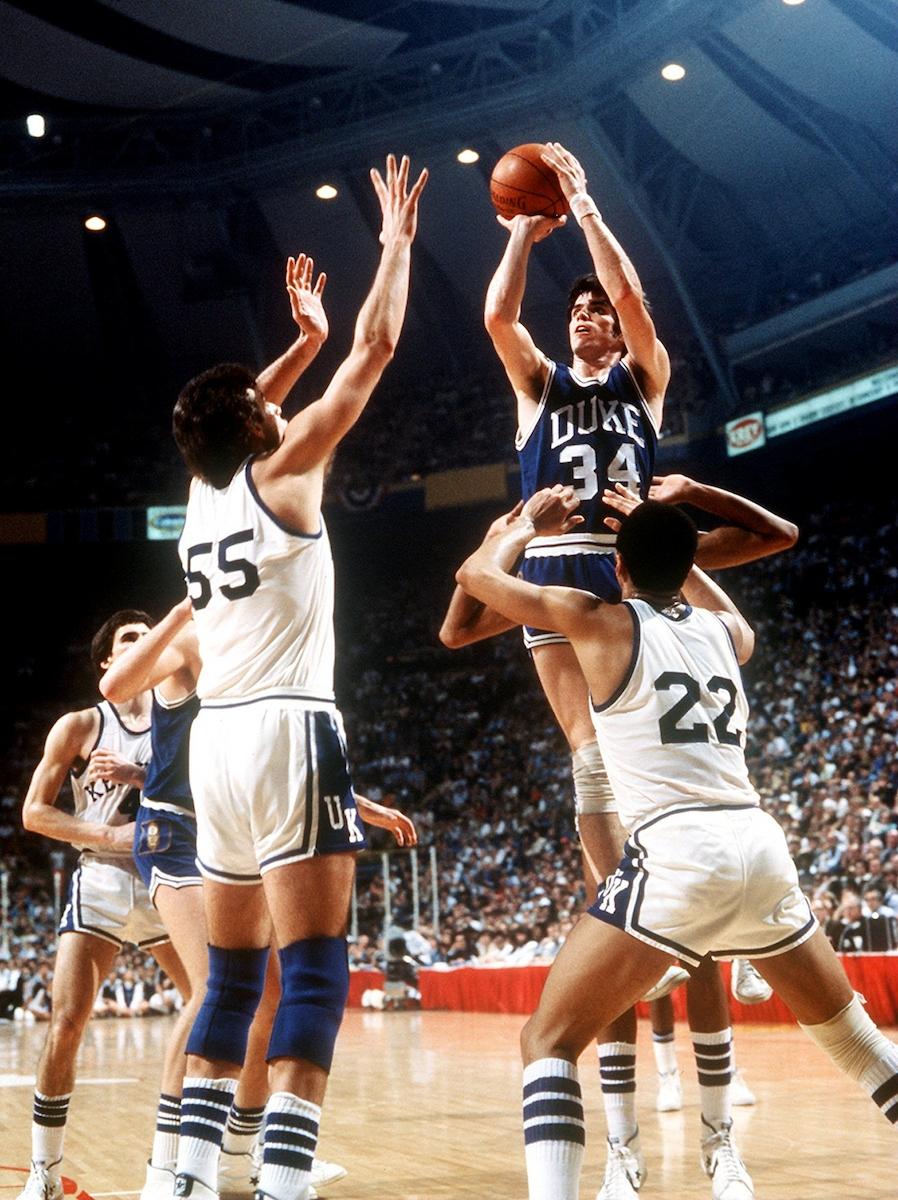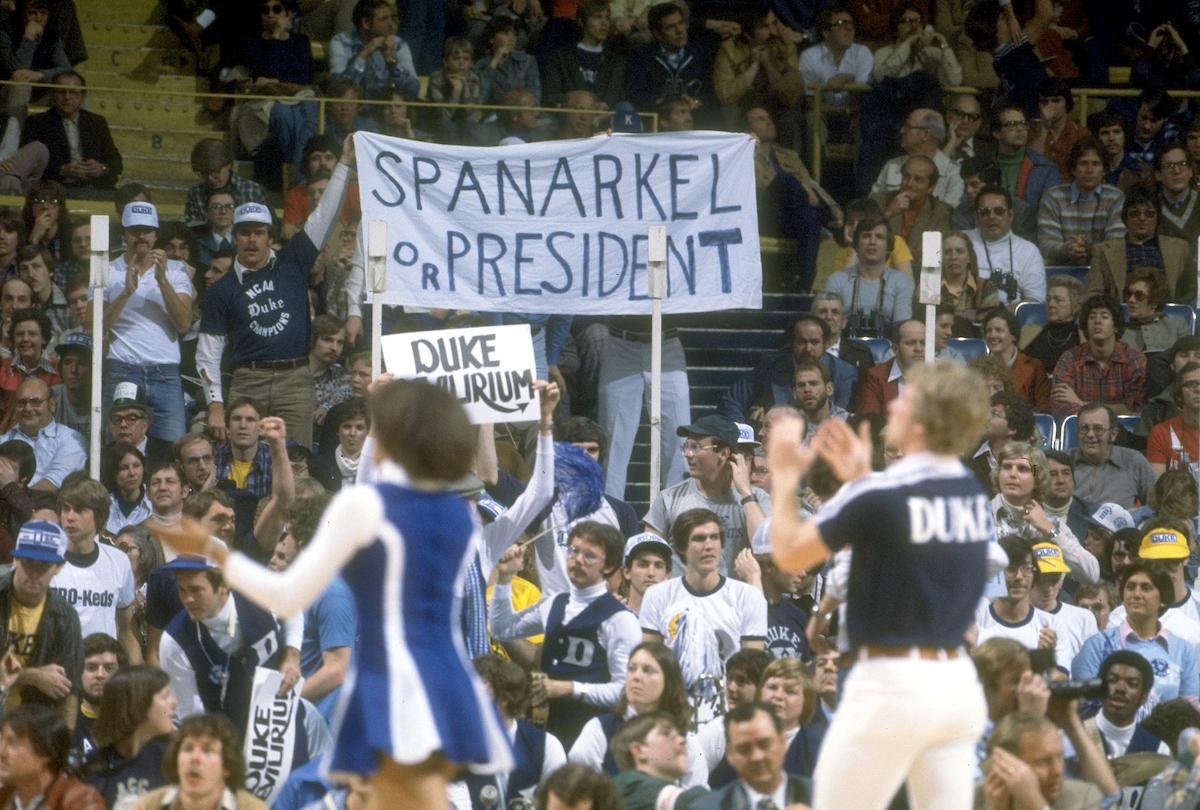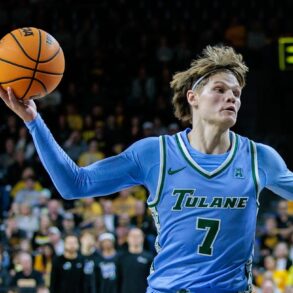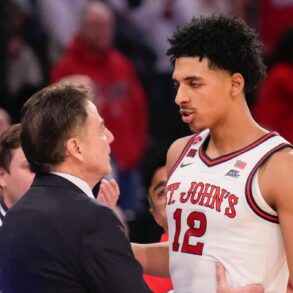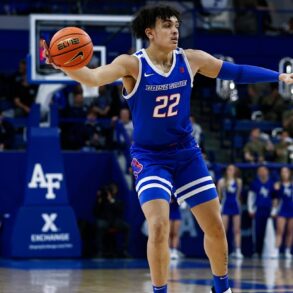Duke is on the main stage in the final weekend of the college basketball season and Mike Krzyzewski is not. The last time anyone could say that was…
It was March of 1978. There was no 3-point arc, no shot clock in college basketball. There were seven teams in the ACC and 32 spots in the NCAA tournament. A term was officially being used for the first time by the NCAA, who would later trademark the phrase: Final Four. It seemed to catch on. The Duke coach was an Air Force veteran from the Philadelphia area named Bill Foster, who had been hired to light a fire beneath a program that had stalled in mediocrity. The team captain was a shooting guard from New Jersey who had also pitched on the Blue Devils baseball team.
The Krzyzewski Age was still years away. He was at Army at the time, having taken a team to the NIT for the first postseason tournament of his head coaching career, His glory days in Durham would not begin until the next decade and then flow nearly uninterrupted well into the next century before one of his guys, Jon Scheyer, put a new face on the dynasty. And here the Blue Devils are, chasing a championship into yet another April.
But the team captain from 1978 is on the phone and pointing out that to get the full view of this golden era at Duke, one needs to go back to that year when a young Krzyzewski was still at West Point. Back to another Blue Devils team that pointed the way up. They were Duke before Duke was really cool.
“If you talk to guys on our team, the egos would say we put them back on the map before Coach K did,” Jim Spanarkel is saying from his Merrill Lynch office in New Jersey. “And there might be some truth to that. We have to believe that we had something to do with the impact of Duke basketball at that point.”
Times were different in that 1978 Final Four. The site was the St. Louis Checkerdome, now gone for decades, its location turned over to apartments, shops and business offices. This was back before the Internet and streaming services and all the rest left nothing unsaid about the month of March.
“Nowadays, you almost can’t get out of the way of the NCAA tournament,” Spanarkel says. “Back then, I tell people our first time we played on national TV that year we played in the ACC championship game that they televised on ABC Sports. I’m pretty sure they preempted Wide World of Sports that afternoon to televise our game.”
It was so long ago, people didn’t even root against Duke. There was no reason. The Blue Devils were among the elite in the 1960s with three Final Fours under Vic Bubas but had retreated into the shadows. Over a six-year period from 1972-77, they went 76-82 and had not played in a postseason tournament. Very, very ordinary.
Suddenly, they were 26-6 and in the event with a new name: the Final Four.
Hate Duke? “I probably would say it was just the opposite,” Spanarkel says. “The reason I say that is the way we played was infectious. I think we had such a positive and infectious way of playing as individuals and as a team, a lot of people gravitated to us, and the fact we weren’t supposed to be there. I think we caught the country by surprise a bit and a lot of people just latched onto us.”
They were a young bunch, with two freshman starters, two sophomores and Spanarkel. Sophomore Mike Gminski was an emerging star, as was freshman Gene Banks. Freshman Kenny Dennard and sophomore John Harrell completed the lineup. Off the bench was Bob Bender, who had been at Indiana in 1976 and pulled off – for back then – the unimaginable feat of playing in the Final Four with two different schools.
They rolled to St. Louis with a 90-72 regional title game thrashing of Villanova and then upset a Notre Dame team with eight future NBA players in the Final Four 90-86. These guys could score all right. That only left Kentucky, but the Wildcats – feeling the pressure from an impatient Big Blue Nation – were on a mission and won the championship game 94-88, with 41 of the points coming from Jack Givens.
Spanarkel has made a good living in both the financial world and as a college basketball television analyst. He doesn’t dwell on 1978 but mentions how “it’s something that stays with you.” A couple of things always come to his mind when looking back.
“No. 1 is that the final score never seems to change. No. 2 is like I’ve always said. And I say this on the air from time to time when doing games, it’s not the team that catches fire as soon as the NCAA tournament begins, they’ve usually caught fire four to eight games before that. We started playing well the last month or so and it just carried over to the NCAA tournament. Except for the national championship game.
“How did we do it? We probably didn’t know any better at the time. We just started believing in ourselves and we were having the time of our lives playing basketball.”
Kentucky, especially Givens, ensured there would be no happy ending. “I knew we were in trouble during the game, when — I think it was the middle of the second half — he took a corner jump shot that grazed the side for the backboard and kind of banked in off the side of the backboard,” Spanarkel says.
Oh, well. Duke returned everyone the next season so the Blue Devils would be back, right? They started 6-0 and were ranked No. 1 but then came back-to-back losses against Ohio State and St. John’s. “I’m not sure we really regrouped totally from that,” Spanarkel says. “We played out the season and we were still a good team. I think there was a fracture here or there and St. John’s got us again in the first round when I guess it was Penn that got Carolina the same day.”
True. ACC fans called it Black Sunday.
Spanarkel graduated as an All-American and the first 2,000-point scorer in the school’s history and headed for the NBA, but Duke returned to the Elite Eight in 1980 – beating Kentucky in Rupp Arena in the Sweet 16 – before losing to Purdue. Foster, perhaps worn down by the pressure of expectation that 1978 had created, left for South Carolina. Duke turned to this Army up-and-comer Mike Krzyzewski, who went 38-47 his first three years in Durham. In today’s impatient times, he might have been sent back to West Point for a refund. In the 1980s he was allowed to stay long enough to build a historic powerhouse, its lights so bright that 1978 might have been a tad lost in the glow.
But now that team has oddly found a way to be remembered. Duke is in the Final Four with a coach not named Krzyzewski, and they were the last batch of Blue Devils to do that.
“I actually liked Bill Foster quite a bit. I thought he was a great coach, he was looking out for his players, he was a good marketer of programs. When he first got there the Duke program had hit kind of a lull,” Spanarkel says. “He understood he had to work both on the court and off the court to get people into the stands and get them to be friendly with Duke basketball again.”
Attendance picked up. Students even began camping out early near Cameron Indoor Stadium before the North Carolina game. Yes, there was a Krzyzewskiville in Durham even before there was a Krzyzewski. “Maybe not as publicized,” Spanarkel says. “Once again that’s the thing you go back and nobody knew about it.”
Times were good at Duke in 1978, but they would one day get a whole lot better. Spanarkel says he could never have imagined what was ahead.
“No, and if you asked Coach K if he would have envisioned that from the first day he joined Duke my guess is probably not at that point. But then when he started building it up and getting it going maybe he could foresee what the future was going to look like. I think he maximized the name Duke University as well as he could both on the floor and off the floor. Coach K did a marvelous job of turning that local North Carolina brand into a national and global brand.”
As Duke prepares for its first Coach K-less Final Four in 47 years, Spanarkel sits in his office and looks at a plaque his girlfriend – now his wife — gave him long ago. “She took the front page of the Sports Monday on the New York Times – I’m looking at it right now, faded, Monday, March 27, 1978 – and it has a picture of Jack Givens on one side, a picture of me on the other and Reggie Jackson underneath it.”
The Blue Devils of ’78 remain close with an active texting chain. “The other night with Houston winning (and now set to play Duke), first thing, one guy started out, what does everybody think about Houston? Five or six responses came in within about 10 minutes,” Spanarkel says.
The aging men on that text chain will always feel part of the aura in Durham. Once upon a time, Duke basketball needed rebooting, and they were first in line.
This post was originally published on this site be sure to check out more of their content.


